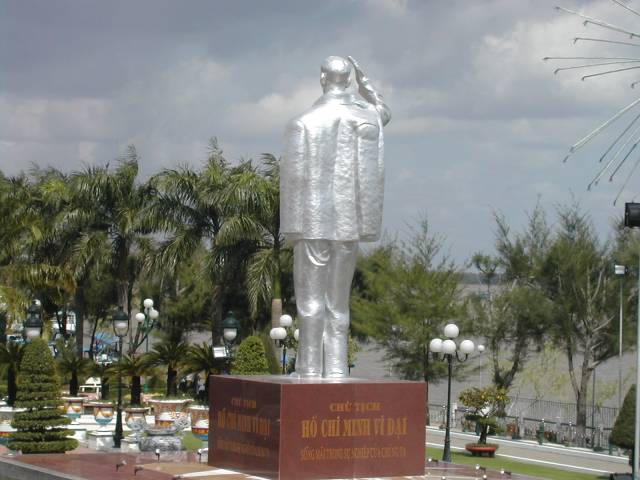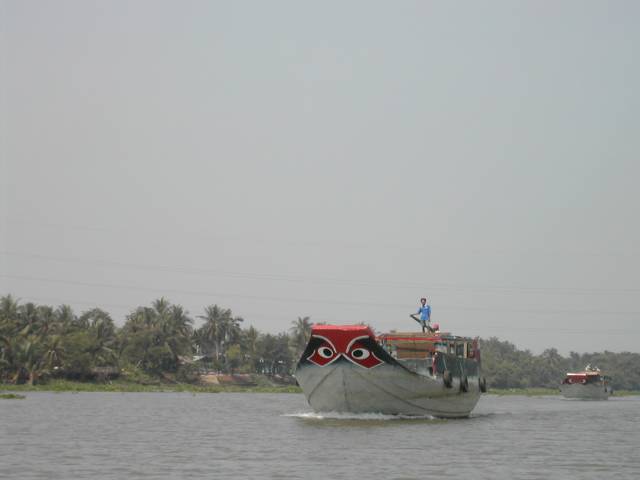
The ships have eyes to find their way through the Mekong Delta.
”The river took it all. My husband, my children, all that we owned. Now I have nothing but grief. Menam Khong destroyed my life”.
These were the first words I ever heard about the Mekong river from a miserable Hmong woman in an over crowded refugee camp in Thailand sometime in the early 1980’ies.
At the time the Hmongs had a very difficult life. Many of them had served as soldiers with the CIA-backed opium warlords who fought the Laotian communists.
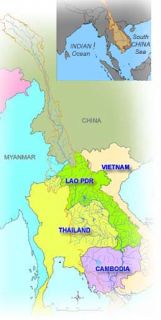
The secret CIA war in Laos collapsed along with the US withdrawal from Viet Nam, and thousands of Hmongs fled across the monsoon swollen Mekong River. Many were shot by Laotian soldiers, others drowned, after the Thai military pushed the flimsy boats back into the river.
Now the old lady displayed her ordeal in hand broidery pictures that quickly had become a best selling commodity among the expat aid workers and the few journalists that came by to depict a disaster that no one really cared about.
The Hmongs had been caught in an ugly crossfire – they were now expendable from a US viewpoint and seen as a security threat by the victorious regimes in Viet Nam, Laos and Cambodia. Thousands were stuck in camps - without proper recognition as refugees. They lived there in limbo for years, before they drifted back to the hill side jungles, where they came from.
Even today the Mighty Mekong is rightfully considered a killer by the thousands of people that lose everything, when the gigantic river flexes its enormous power. Every year people drown somewhere in the six countries that the Mekong runs through on its way from the mountains in Tibet to the Cuu Long Delta in Southern Viet Nam.
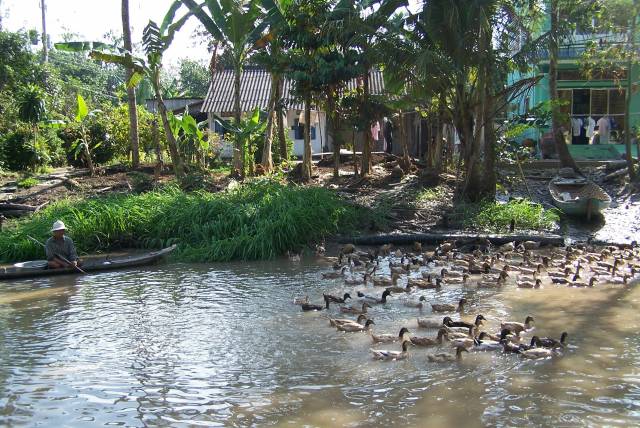
Birdflu concern - not in the Mekong Delta where I met these ducks in a village at the height of international bird flu anxiety in January 2006. Mighty Mekong is feeding millions of ducks - and people in six countries.
Feeds 90 million people
In all fairness Mekong – the 10th biggest river system in the world – is much more a blessing than a disaster. More than 90 million people depend on the river for their livelihood – until a few years ago the Mekong made the Ton Le Sap Lake in Cambodia the single biggest fresh water fish reservoir in the world. But since the end of the war in Cambodia the busy fishing fleets are rapidly depleting the lake of its riches.
Mekong has been a huge rice bowl for the whole region since the first humans set foot there. This fact also explains why so much human blood has been spilled in the brown, muddy waters of Song Cuu Long – the ‘River of the 9 dragons’ as the Vietnamese call it. The list is long of kingdoms which have claimed Mekong and wasted their armies to enforce it.
Even today the battles continue – however in an institutionalized form. Thailand, Laos, Cambodia and Viet Nam have established the Mekong River Commission. Since 1995 the Commission have served as a vehicle for projects to save the river and share its resources. It is also a political forum for adressing the conflicts between the countries on issues, related to the Mekong. China and Burma are not members but do participate in the dialogue.
At the center of controversy stands the issue of dams. The rapid economic development in the region has created a massive need for power supply. China has already built two dams and has 12 more in the pipeline. Dams are also being considered by Laos and Cambodia. Conservationists worry that these projects will do extensive damage to the ecosystems of the river. In addition there is some concern regarding exploitation of mineral resources - i.e. copper, tin, gold, gem stones and iron ore.
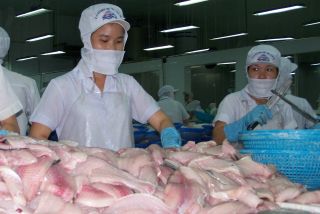
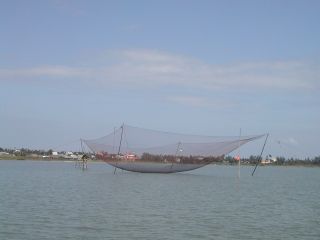
Over fishing is a serious problem, especially in the lower Mekong.
Among other serious problems are over fishing, especially in Cambodia and Viet Nam, and industrial and human waste, not least in the densely populated Delta.
The efforts to save the Mekong from its human beneficiaries is supported by the international donor community politically as well as in more practical terms – incidentally Denmark is the biggest donor to the Commission. Most recently Denmark sponsored an international Mekong conference in Ha Noi, with the participation of all major stakeholders and donor organizations.
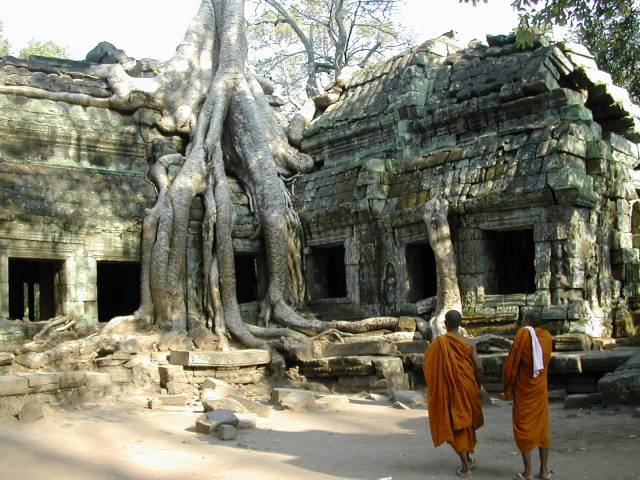
It is well worth to make a stop in Cambodia and visit the magnificent temples at Angkor Wat. Some 700 years ago Angkor was the power center of the Mekong River.
Traveler's tales
Traveling down the river is a great experience, no matter if you are a tourist or a professional. Dangerous rapids and waterfalls will prevent you from going all the way by boat. And there are lots of other good reasons to get ashore on your way.
Over the years, I have found that the river is easily accessible from fascinating points of departure in Laos, Thailand, Cambodia and Viet Nam. Some smart tour operators will offer to arrange it all for you for very steep prices - like USD 9.000 for 20 days - a business known as 'robbery on the river'.
In spite of what is said at sales counters in Bangkok, Hong Kong and Singapore, the 'Mysterious Mekong' is not exactly reserved for Indiana Jones types anymore. Do-it-yourself travelers may have more fun - and more money left, and they rarely meet with the head-chopping warriors who came to fame in Francis Ford Coppola's Apocalypse Now.
In Laos you would want to make a stop at the Pak Ou caves, where hundreds of Buddhas have been kept for centuries. You may also have a glimpse of the opium poppy farmers, if the army patrols haven’t put them away. And you do not want to miss Luang Prabang, former Kingdom capital. Now declared a UNESCO World Heritage Site, Luang Prabang boasts an amazing concentration of some of the finest pagodas in Asia. Few visitors - if any - havde walked away unimpressed with this small remnant of a once rich and powerful kingdom.
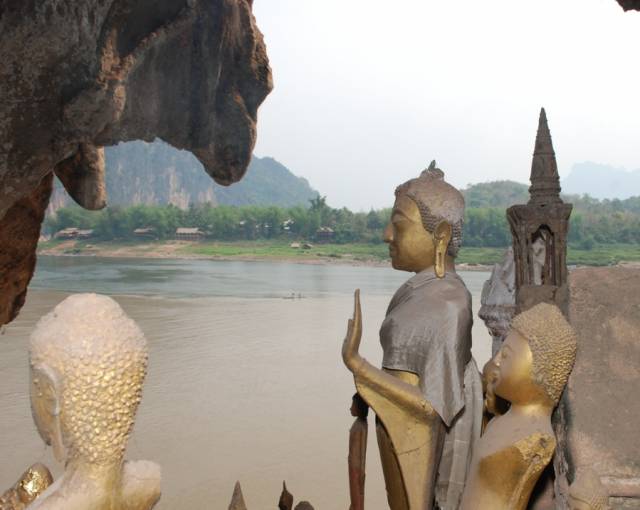
The Pak Ou Caves - two hours of smooth sailing from Luang Prabang, and these days no more crawling on a tricky river bank - concrete steps are now making it a lot easier for the many visiting tourists.
In Cambodia you will of course get off the river at the city of Siem Reap to see Angkor Wat – the magnificent ruins of probably the most powerful Kingdom that ever controlled Mekong.
In Viet Nam you will want to investigate in great detail, how the Mekong has become a (less than sustainable) moneymaker for the catfish and shrimp farmers – export earnings are now more than USD 4 billion a year in the Vietnamese fishing industry. On top of that 16 million tons of rice are harvested every year in the Delta.
You will also see people living on and working in the river, as they have done for centuries.
If you get out a map of the Delta you may wonder why the Vietnamese call it the River of 9 Dragons, since there are only 8 river arms in the Delta. The explanation for this is simple: Number 9 is a figure of great luck and fortune – so please add the Saigon River to the count.
